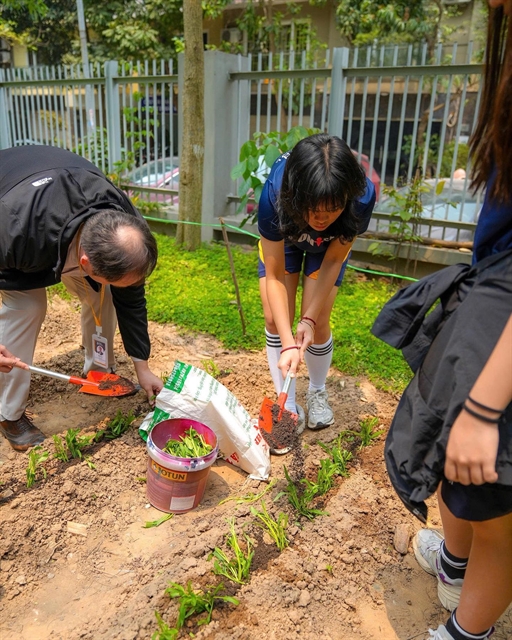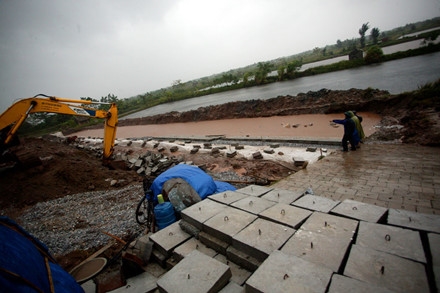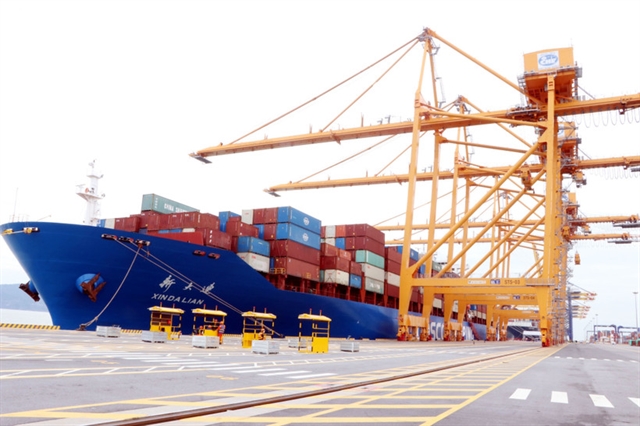 Environment
Environment
.JPG)
More than VNĐ112 trillion (US$5.02 billion) will be spent to improve flood prevention measures and dyke systems along the Hồng (Red) river and Thái Bình River in northern Việt Nam, the Ministry of Agriculture and Rural Development (MARD) announced on Thursday.
 |
| More than VNĐ 112 trillion (US$5.02 billion) will be spent to improve flood prevention measures and dyke systems along the Hồng (Red) River and Thái Bình River in northern Việt Nam, the Ministry of Agriculture and Rural Development (MARD) announced on Thursday. |
HÀ NỘI — More than VNĐ 112 trillion (US$5.02 billion) will be spent to improve flood prevention measures and dyke systems along the Hồng (Red) River and Thái Bình River in northern Việt Nam, the Ministry of Agriculture and Rural Development (MARD) announced on Thursday.
The money will come from various sources including national and local budgets, Official Assistance Development and private sector or public-private partnerships from now to 2050.
Both the Hồng and Thái Bình rivers are key river systems in northern Việt Nam, playing a crucial role in irrigation and waterway traffic.
The scheme, approved by the prime minister in February, aims to help localities along the two rivers in coping with floods and storms, boost socio-economic development and strengthen security in the region.
“The scheme is very important. Local authorities will use it to build detailed plans on flood prediction and prevention, dyke construction and other issues relating to resident management and land usage,” Hoàng Văn Thắng, MARD deputy minister, said at the meeting to announce the scheme.
“At national level, the scheme helps to come up with ways to deal with floods over the whole area of the two rivers.”
The scheme covers 15 cities and provinces, including 11 in the Red River Delta and four in the northern midland and mountainous region.
It urges a focus, from now to 2020, on setting up border landmarks to define dyke protection corridors along the two rivers, and improve the quality of dyke systems in the low-land areas of Thái Bình River in addition to dyke systems that protect Hà Nội and urban areas.
It also aims to set up a centre to co-ordinate measures for disaster prevention.
Thắng said flood-prevention construction had received much investment in recent times. A system of large upstream reservoirs was almost completed while dyke systems downstream had been upgraded. The ability to forecast floods in the short and long term had been considerably improved.
However, he said over-exploitation of natural resources, like soil and forests, badly affected flood prevention work, in addition to an increase of radical weather due to climate change, rapid growth of population and economy in downstream regions, as well as the construction of upstream reservoirs in China.
Thắng urged local authorities to set forth detailed plans to implement the government’s scheme.
He called for an emphasis on increasing non-construction solutions such as afforestation, and improving flood forecast and reservoir-operation capability.
Tightening control of sand exploitation in river beds was needed as illegal exploitation would damage river banks and dykes, he said.
Local authorities were also asked to intensify management on lands along riverbanks with high population density.
MARD estimates that more than 2,000 households, most of which are in Hà Nội, must be removed from the 143 riverbank areas under the scheme.
The whole region currently has 56 dykes, covering 2,200km. The dyke system along Hồng River is the longest at 1,314km. It currently can withstand flood water level of 13.1m in Hà Nội, while the dyke system of the Thái Bình River can withstand a level of 12.7m in Hà Nội. — VNS
.JPG)


-awarded-beers.jpeg-image-(.jpeg).jpeg)
